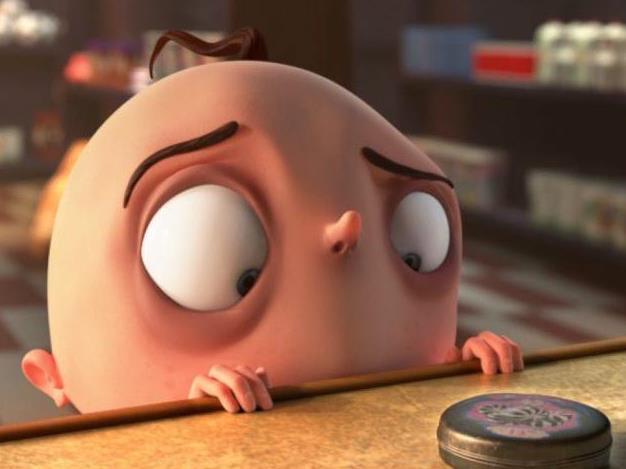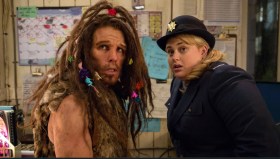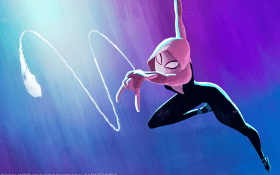What’s in the box for tomorrow’s screen sector? Image: Figaro Pho.
‘If you look across different parts of the creative sector from music to movies to design to performance you see that the problem sets are essentially the same’, said David Court, currently Head of Screen Business at the Australian Film Television and Radio School.
‘They are to do with being small, with their strong project orientation, with marketing, the complexity of finance and resource gathering, and the management of uncertainty, and the whole creative process.’
‘ a once in 100 years opportunity’
From the end of January, David Court will be stepping down from his position at AFTRS to write a textbook with Melbourne economist Jason Potts for Routledge, the respected UK academic publisher. It will be about how to grow a creative business and is designed for creative people wrestling with the daily problems of running an enterprise.
‘The other bit of it to that has been in my mind for the last few years of teaching at the film school is how these industries respond to the opportunities of digital,’ he said. ‘And I think there’s an amazing set of opportunities – a once in 100 years opportunity which is the same across the sector.’
Creative people are used to hearing wildly enthusiastic stories about the wonders of the new digital world in an age of creative destruction while they deal with the chaos it causes.
Court is neither a booster nor a pessimist. ‘I think the truth is in the middle. It’s like being on a boat bobbing up and down and you lose the view over the horizon so our job is to see where that horizon is so we can navigate. To me we can settle the horizon by trying to understand the value to the end-user, to the consumer, the audience member. What do they get out of this? What are we delivering to them?
‘And when you look at it from that perspective I think the story is fundamentally positive – because the value proposition for audiences is just on the up and up.’
‘here is the challenge’
David Court grew up in Hobart in the 1970’s, where it was easier to see how the limitations in media outlets affected the society. ‘The ideal piece of content in the mass media world didn’t offend anyone and therefore might be consumed by everyone. The potential audience was 100%. It was never achieved of course, and we are not in that world any more.’
Instead, the proliferation of media opportunities has fundamentally changed the structure of demand for content.
‘Now the idea is to leave the edges on, to create content which may be radically unattractive to a large part of the audience but is strongly attractive to what you might call a fan base of people who see it as the thing they most want to do.
‘Here is the challenge. As content makers we have to appeal to people who can view anything at all and the only thing they will watch is the thing they most want to watch. So our game has changed and we are now out of the world of trying to appeal to all and put into the world of trying to appeal to passion.
He cited the much-quoted 2014 comment from Roy Price, the immensely powerful head of Amazon Studios, in Hollywood Reporter:
’In an on-demand environment, people have to demand your show… Let’s say you had a show where 80 percent of the people you show it to think it’s pretty good. They might watch it, but none of those people think it’s a great show nor is it their favorite show. But then you have another show where only 30 percent of people like it. For every single one of them, they’re going to watch every single episode and they love it. Well, in an on-demand world, show No. 2 is more valuable.’
So, said Court, ‘He is saying don’t be mass, bring us niche – niche is the game. Niche used to be a term of rejection but it has become a new currency. The strategy is to reach niches while they are small, and hopefully they will grow. ‘ Even then, thirty percent is tops.
‘audiences are getting something fantastic’
‘We are in a period of profound disruption. The models are broken and we are struggling in the dark trying to understand what the new models are. If you look to the fundamentals – talking about the horizons – to see into the distance the fundamentals are that we are delivering value to audiences. That is my point.
‘Audiences are getting something that is fantastic. They are getting to sit right at the top of their preference schedule all the time to consume exactly the thing they want to consume right now and that is a massive increment of value.
‘Our job now as an industry is to work out how to get our share of it.
‘We are learning that some of the new models are starting to bite. Everyone became very depressed about the prospects of subscription models but now we’re seeing subscriptions taking off.’
Music streaming service Spotify is a provocative example. As its various markets around the world mature, users switch from free with ads to subscription, until 80% are paying. There is very little churn. Musicians are finding their revenue goes from a surge/collapse see-saw as the hits come and go to a much smoother curve which very slowly declines as they become less productive.
‘middle class artists’
The effect, said Court, is extraordinary. ‘Last week a senior [US] music industry figure who deals with independent musicians and songwriters described to me how many of his artists were becoming what he called middle-class artists. These are people you’ve never heard of, but they are getting attention in places you don’t know about, and they are making six figure middle-class incomes. They are paying down mortgages and are sending their kids to private schools, so subscription is getting some traction as a business model. And there will be others too, finding their way through the wreckage in this process of creative destruction.
‘You can’t get people to subscribe to something they don’t think is valuable. People will subscribe where the value is clear, where delivery is dependable and where branding is consistent and attractive to the target sector.
‘anyone can be a brand’
Unfortunately, the net is full of noise, and audiences must navigate through it to find the niche they will love. ‘Branding is one way,’ said Court, ‘and a beautiful thing about branding for content creators is that anyone can be a brand. Big corporations do not have a monopoly on branding. In many ways they have to struggle to create authentic brands in the same way that an individual or a creative group can establish a creative brand. So I think it’s a levelling thing.’
David Court started a business newsletter in the early 1990’s with Jeremy Bean, another business theorist who moved into the screen sector. In a way it was an early example of branding. It was printed between them, hand collated and posted to their readers. They measured their work in paper cuts. In today’s money, their first laser printer cost $15,000. Now, he pointed out, we can buy the equivalent for $44 in Woolworths. At the same time, the Graphical User Interface was emerging to transform digital communications and the modern internet was born.
‘a great time to be a mammal’
This is extraordinary’, said Court. ‘And its a boon to anyone in business, particularly for smaller players. Things like Skype and Dropbox and [messaging app] Slack are proportionately much more valuable to small players like us. These tools are amazing in a typical creative business where we operate in very small groups and in extensive networks because they strip so much friction out of system and they are proportionally more valuable to to than they are to big corporate dinosaurs. This is a great time to be a mammal.
David Court argues that we have been stuck for too long in a static model of professional mastery. Now traditional cinematographers, editors, dancers, writers, actors and producers are spreading their skills across more of the value chain. He likes to quote the example of Shakespearian theatre, where actor-managers ran companies relying on ticket sales and patrons to survive. It was popular, fast turn-around and ruthless.
He sees the benefits in terms of a business case. ’The value chain stretches from the first word on a page to the final consumption by the audience member. That is a long, long value chain. Making and creating is probably the most risky and least rewarding part financially, so every time you extend to other parts you are moving to a less risky and more rewarding activity. So with every step along the value chain you are improving your average profitability and reducing your risk..’
However, as we skip around the dinosaurs, the happy language of evolution hides the loss of old crafts and the rise of new combinations that we don’t really understand. ‘It feels disruptive,’ Court acknowledged. ’t feels like a loss of knowledge is happening and there is a displacement of one knowledge for another.’
But we will emerge into a more stable system. ‘I think there will be just as much specialisation as ever. Those specialisations may look different in the near future but they still will be specialisations. People derive so much satisfaction by becoming a master. Achieving mastery in your field is a beautiful thing.’
‘a taxonomy of structures’
Why is he confident? Because he thinks we can rewrite the rules behind the way we co-operate. ‘The Pty Ltd company is just one approach and is possibly the least interesting structure in the creative sector. There are many others to be deployed and developed. And that is one of the things we to think about – what are the ways we come together, what is the right structure to bring us together.
‘I’ve been creating a taxonomy of structures that have been deployed over time and I’m up to thirteen. They range from traditional creative structures like theatre companies or film studios or artist ateliers but I’m also looking at neighbouring fields like law firms and investment banks and Co-op’s. The family is another brilliant structure. In our area we sometimes see in our area is typically two brothers working together or two sisters and what’s interesting in that kind of structure is that it’s a structure built on trust.’
At the moment, the agents of change in the sector like Screen Australia are supporting companies to grow and merge. In this version of the future, sole operators will be absorbed into larger organisations, which offer a stabler income and maybe the comforts of the middle class artist. For true independents, that is not a popular view.
David Court argues that the independents needs to create larger structures, but he challenges the accepted wisdom in a very important way. How large do we have to become?
‘put on some muscle’
‘According to the ABS data, the average company size in the creative sector was1.8 people and the median was one. But when I say get bigger I’m not thinking very big at all. What if the average size was five people? I am not saying we should turn into corporate dinosaurs, I am suggesting we should put on some muscle.
‘It is not easy to work alone. There are things you can do as a sole operator, because you are very fluid, but it practical terms it is hard to maintain over time. It is hard financially and emotionally – there’s no end to it. Take your shoulder from the wheel after thirty years of grinding work and the wheel stops. It has no value.
If you build a business of five, you can have some economies of scale, you can develop specialist skills, you can smooth the risk and smooth the income. And the business has value once you take your shoulder from the wheel. I think there is a really strong argument for growth in that modest way from 1.8 up to five.
So is five a magic number?
‘I am not saying we should stop at five. I am saying there is so much value in going from 1.8 to five that we should do it. We can transform our business destinies and have more control over our futures. There is some optimum number. I don’t know exactly what it is but I don’t think it is a huge number and I know that its closer to five than it is closer than one.’
‘there’s power in numbers’
David Court is living out his own ideas about the future of screen businesses. Traditionally, academic writers and researchers focus on a book. But he is building an enterprise that links a group of colleagues to harness much more of the value chain, which sees the text as an element in a curriculum, and a curriculum as an element in a marketplace.
As he said in an email, ‘I’ve had a fabulous run at AFTRS and now I’m taking my message to the wider creative industries. I’m also doing what I teach others to do and reaching out to people who share the same vision of an empowered future. There’s power in numbers!’





